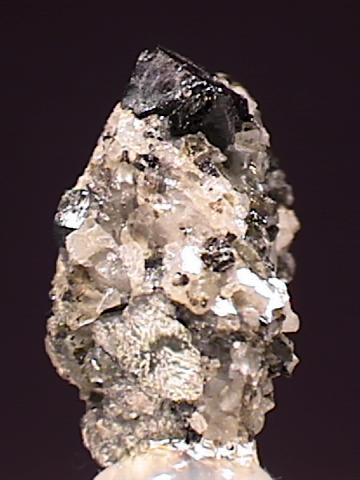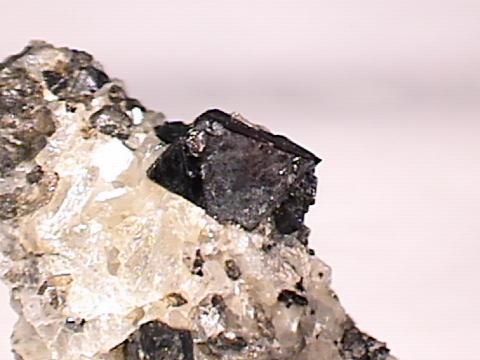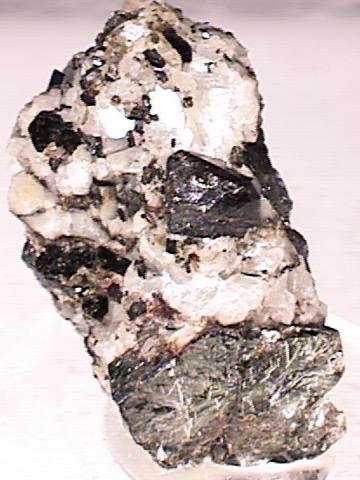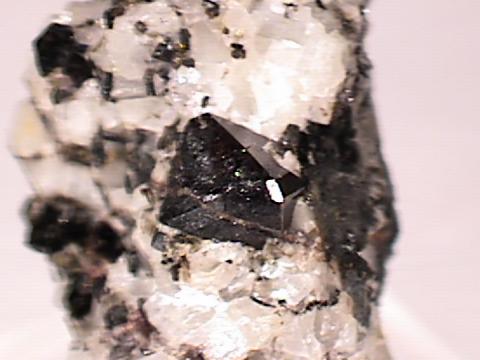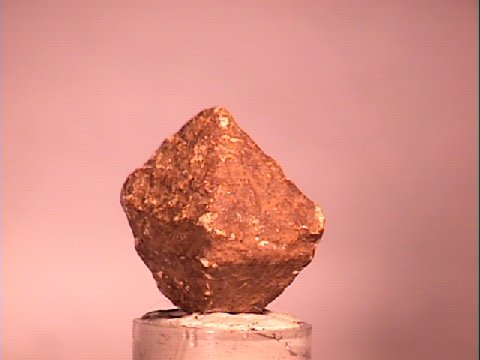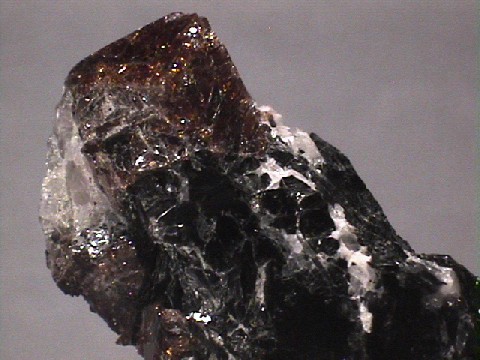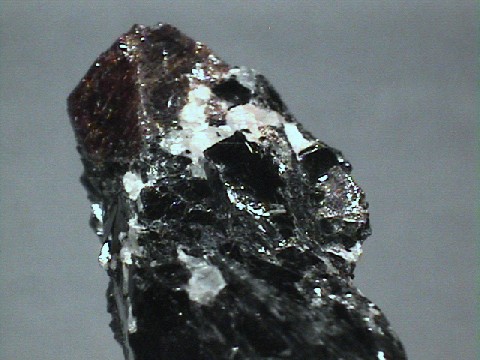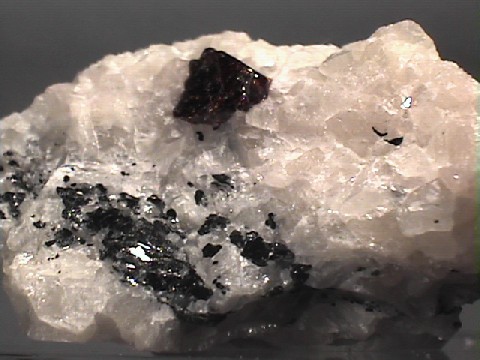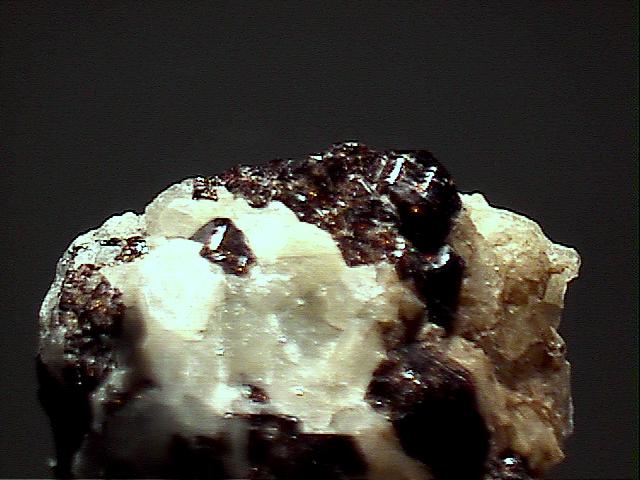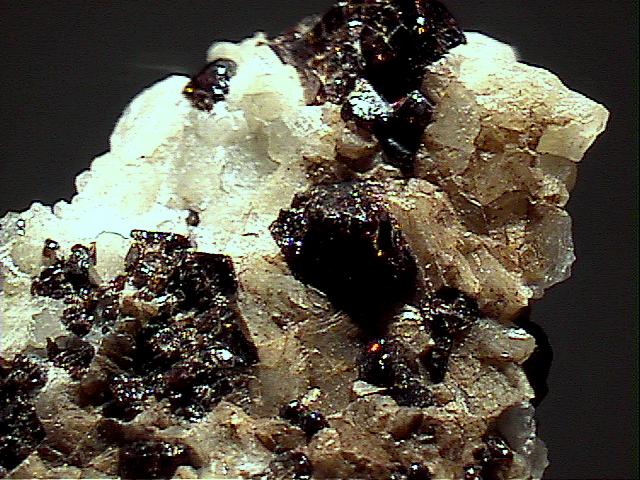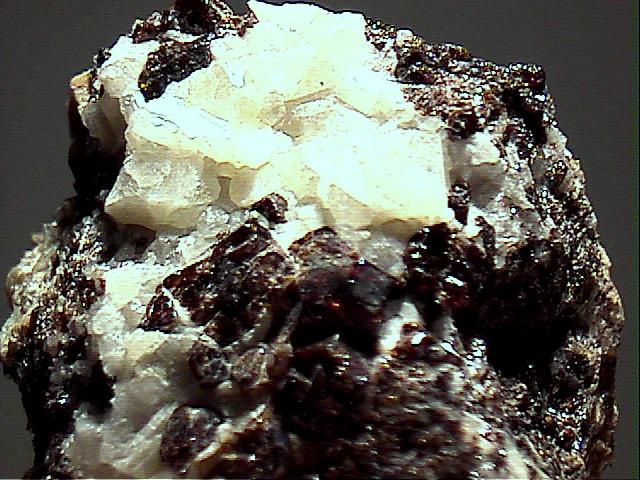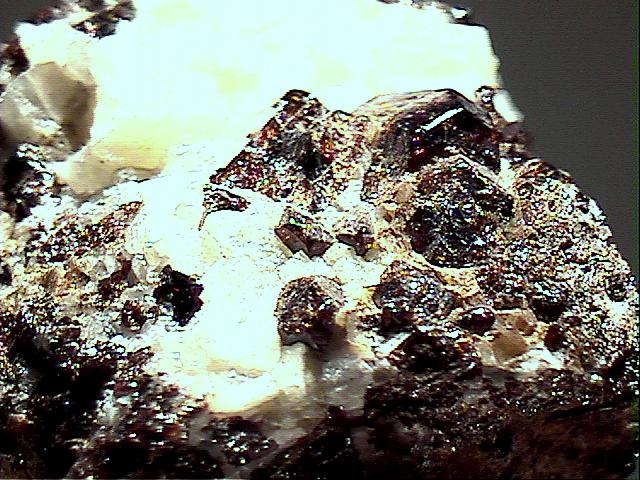 THE
MINERAL PYROCHLORE
THE
MINERAL PYROCHLORE
- Chemical Formula: (Ca, Na)2Nb2O6(O, OH, F); Calcium Sodium Niobium Oxide Hydroxide Fluoride.
- Class: Oxides and Hydroxides
- Group: Pyrochlore
- Uses: A very minor ore of niobium and rare earth metals and as mineral specimens.
Specimens
Pyrochlore is one of the tantalum/niobium oxides that are generally difficult to distinguish. Fortunately there are few of them that form exquisitely shaped octahedral crystals. Pyrochlore crystallizes in the isometric symmetry class and forms fine octahedral crystals that are typically and characteristically modified by other isometric forms. Other members of pyrochlore's namesake group the Pyrochlore Group also form octahedrons, but can sometimes be reliably differentiated by color, streak and other characteristics.
Pyrochlore generally contains substantial amounts of radioactive elements called rare earths and this produces the radioactivity in this mineral. It is therefore a member of the informal group of minerals called the Rare Earth Oxides. These minerals are generally difficult to distinguish but the octahedral crystals of pyrochlore once again are usually sufficient indicators.
Pyrochlore is an end member of a solid-solution series between itself and the mineral microlite. The two minerals have similar structures and properties, but microlite is the tantalum rich end member and pyrochlore is the niobium rich end member. The generally lighter pyrochlore is found in a rather unusual igneous rock called a carbonatite (which is composed mostly of calcite) and alkalic pegmatites called nepheline syenites. The overall more common mineral microlite is found mostly in granitic pegmatite dikes and more rarely in the carbonatites. Pyrochlore is the more impure mineral of the two because it is more often accepting of the inclusion of elements such as tantalum, titanium, iron and uranium as well as the previously mentioned rare earth metals into its structure.
Some variety names of pyrochlore are known. "Hatchettolite" and "ellsworthite" both contain uranium and come from the same general location, albeit different mines, in the Hybla area of Hastings County, Ontario, Canada.
Remember, this is a radioactive mineral and should be stored away from other minerals that are subject to damage from radioactivity and of course human exposure should be limited !
PHYSICAL CHARACTERISTICS:
- Color is yellow, reddish-brown, red or black.
- Luster can vary from vitreous, adamantine, greasy to resinous.
- Transparency: Crystals are translucent with darker specimens being opaque.
- Crystal System is isometric; 4/m bar 3 2/m
- Crystal Habits typically include octahedral crystals that are modified by other isometric forms; also found cubic, granular as disseminated grains and massive.
- Cleavage is in four directions (octahedral), but is indistinct.
- Fracture is conchoidal to uneven.
- Hardness is 5 - 5.5
- Specific Gravity is approximately 3.5 - 4.6 (heavy for non-metallic). Variation caused by extent of inclusion of trace metals into the structure.
- Streak is pale yellow to brown.
- Other Characteristics: Generally radioactive.
- Associated Minerals include calcite, feldspars, apatite, zircon and biotite.
- Notable Occurrences include Veshnovorgorsk, Chelyabinsk Oblast, Russia; Mbeya, Tanzania; St. Peter's Dome, El Paso County, Colorado, USA; Brevik, Norway; Alno, Sweden; Oka, Quebec and Hastings County, Ontario, Canada.
- Best Field Indicators are crystal habit, luster, fracture, color, hardness, radioactivity, associations, environment and specific gravity.

